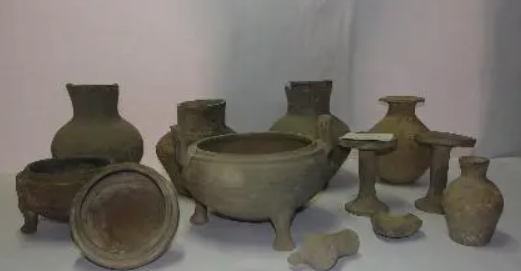Ceramics is a collective name for pottery and porcelain, but also a kind of arts and crafts in China, as far back as the Neolithic period, China has a rough, simple style of painted pottery and black pottery. Pottery and porcelain have different textures and properties. Pottery is made of clay with high viscosity and strong plasticity as the main raw material, opaque, fine pores and weak water absorption, and the sound of hitting is turbid. Made of clay, feldspar and quartz, porcelain is translucent, non-absorbent, corrosion-resistant, hard and tight, and brittle. China's traditional ceramic arts and crafts, high quality, beautiful shape, high artistic value, famous in the world.

Pottery): Pottery, which is a utensil made by kneading clay or terracotta into shapes and firing them. Pottery has a long history, and simple and rough pottery was first seen in the Neolithic period. Pottery was used as a daily commodity in ancient times and is now generally collected as a handicraft. The invention of pottery is the beginning of the earliest use of chemical changes to change natural properties, and is one of the symbols of the development of human society from the Paleolithic to the Neolithic period.

Porcelain): Porcelain is made of porcelain stone, kaolin, quartz stone, mullite, etc., and the exterior is coated with vitreous glaze or painted objects. The forming of porcelain should be fired at high temperature (about 1280 °C ~ 1400 °C) in the kiln, and the glaze color on the surface of the porcelain will undergo various chemical changes due to the difference in temperature, which is a treasure displayed by Chinese civilization. China is the homeland of porcelain, and porcelain was an important creation of the ancient working people. Xie Zhaoxuan recorded in "Five Miscellaneous Tricks": "Today's common saying that kiln ware is called a magnet instrument, and the kiln in Cizhou has the most, so it extends its name, such as silver is called Miti, ink is called chyme, and so on." "At that time, the "magnetic" kiln that appeared was caused by the largest production of Cizhou kiln. This is the earliest historical source found to use the name porcelain.

